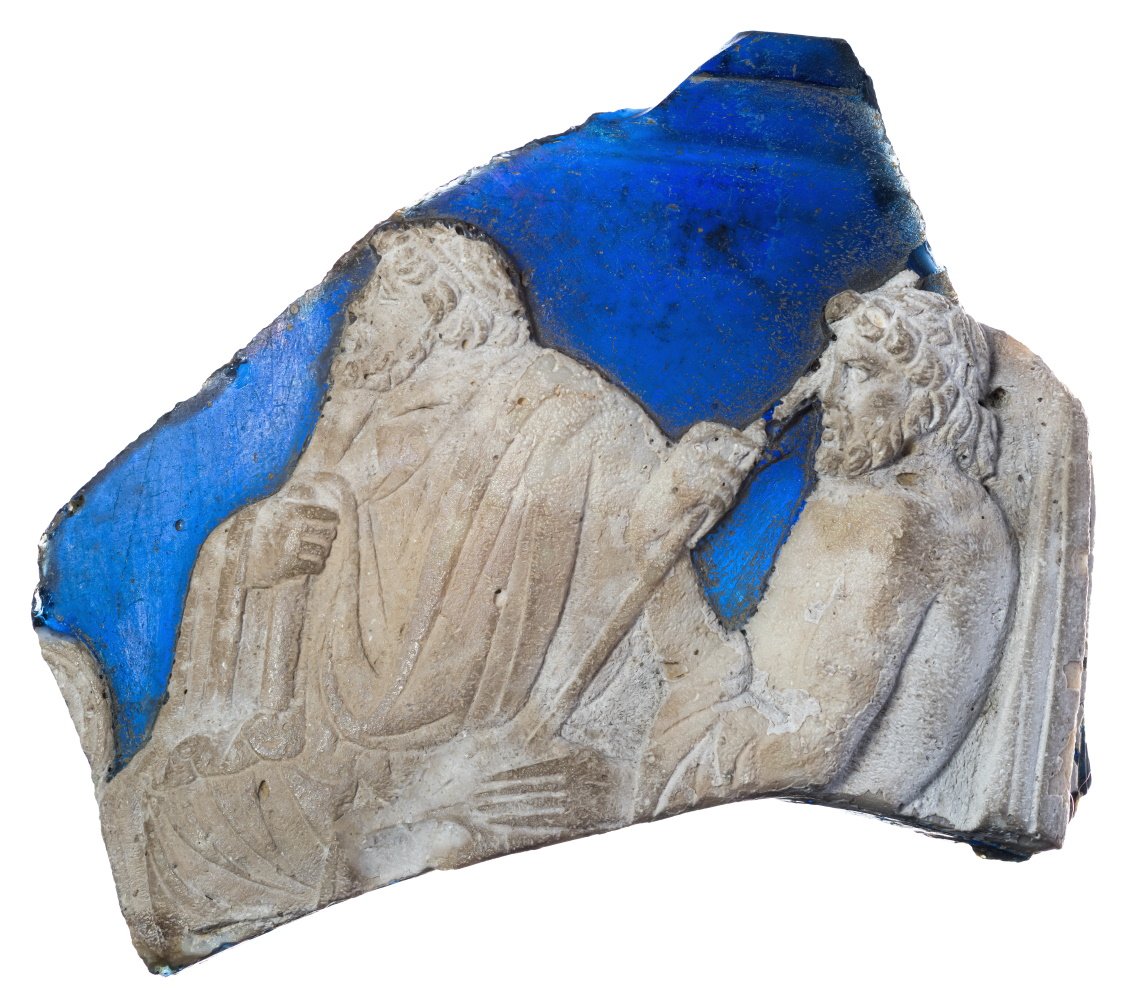On 9 March 1832, August Kestner presented this fragment of a vessel in cameo glass technique at the adunances of the Instituto di Corrispondenza Archeologica. What he did not know at the time was the special production technique of these vessels, glass pottery.
Similar to the production of relief ceramics, the hot, white glass mass is first placed in a moulding bowl with negatively incised decoration by rotary pressing. Then the blue, so-called matrix is pressed into the mould rotating on the potter's wheel with a punch. Since glass, unlike clay in the drying process, does not shrink during cooling, the mould is then carefully smashed to remove the finished vessel. In this way, each vessel made using this technique is unique. Until the 1990s, the archaeological doctrine was that the so-called cameo jars were created by overlaying the coloured vessel with white glass, as in the production of cameos from multi-layered gemstones, by carving out the positive relief image.
The degree of curvature of the vessel's lip and steep wall suggests a calculated circumference of about 36 cm. It would be possible to reconstruct a drinking vessel in the form of a scyphos or a kantharos, each with two ring handles with a thumb plate. Glass vessels of this technique are typical of the table luxury of Augustan classicism.
The interpretation of the depicted preserved figures is problematic. The clothing (undergarment, himation) and attributes (scroll, beaded bandage) of the bearded older man refer to a heroised poet, possibly Homer, the staff and sceptre of the throne holder to a deity.
Former August Kestner Collection, Rome

